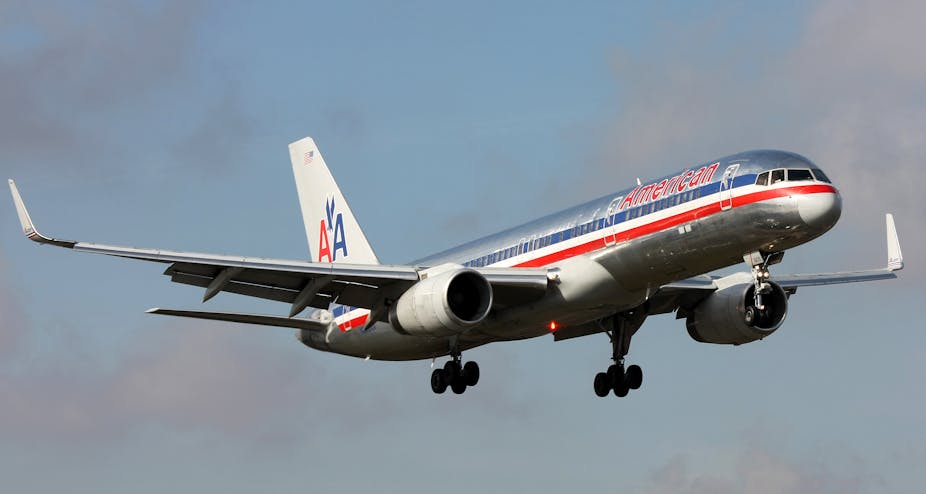The US Environmental Protection Agency (EPA) last week issued a “proposed finding” that greenhouses gases from aviation pose a danger to the health and welfare of current and future generations. It could pave the way for regulations to limit domestic US aircraft emissions – but there are plenty of hurdles still to jump before that happens.
The EPA already regulates aircraft pollution such as engine smoke, hydrocarbons, nitrogen oxides and carbon monoxide – and has done so for more than 30 years. So on the face of it, its new finding that greenhouse gases “may reasonably be anticipated to endanger public health and welfare” makes it sound like it will be a straightforward matter to add carbon dioxide and other greenhouse gases to the list.
Using the EPA to rule on emissions-reduction issues is a tactic that the Obama administration has used several times recently. The new finding on aviation follows similar reports on emissions from road haulage and power plants.
High-flying problems
Aviation is the most emissions-intensive form of transport, and also the fastest-growing source of emissions in the transport sector. What’s more, those emissions are essentially unregulated. This means that emissions from aviation are increasing against a background of decreasing emissions (or at least, against a background of emissions regulation) from many other industry sectors.
Based on Intergovernmental Panel on Climate Change (IPCC) calculations, aviation accounts for about 3% of global greenhouse emissions, although the figure could be as low as 2% or as high as 8%. If the aviation industry was a country, its carbon dioxide emissions would be ranked about 7th, between Germany and South Korea.
Air travel continues to grow at 4-5% per year, and although emissions from domestic flights are regulated under many countries’ existing greenhouse gas targets, international aviation emissions are not covered by any agreement.
Under the Kyoto Protocol, emissions from international flights are the responsibility of the International Civil Aviation Organization (ICAO). Aviation is excluded from international climate policy; the problem is left to the industry to resolve, and none of the more than 3,500 bilateral air service agreements in place across the world addresses the question of emissions.
A UK study found that even if the expanding industry were to implement the “maximum feasible reductions” in emissions through changes to technology and operating procedures, total emissions from the sector may still roughly double by 2050, depending on growth.
Learning from Europe’s aviation debacle
The new US regulations will not attempt to include overseas airlines in its regulatory reach – something the European Union tried and failed when it attempted to incorporate overseas airlines into its Emissions Trading Scheme from 2012.
To head off that action, the US Congress in 2011 passed legislation, which President Obama signed, prohibiting US aircraft operators from participating in the EU scheme, essentially making it illegal for US airlines to comply with EU law.
The result was that the EU backed down, and announced that it would freeze the inclusion of international aviation in its ETS, offering instead to “stop the clock” and allow the International Civil Aviation Organisation (ICAO) to address the problem of regulation.
This time around, the US regulations would apply to private and scheduled flights on domestic routes, as well as international flights by US carriers, but not to non-US airlines flying routes into the United States.
This may sound like progress, particularly for a country with such a large domestic aviation market. But there is yet another reason why this is only progress on paper, for now.
I’ll do it if you do it
The US EPA has stated that its proposed regulations will only be implemented if international standards for emissions are agreed by ICAO. That’s a problem, because since 1997 the ICAO has failed to agree on any kind of solid approach to the issue.
In 2013, the ICAO Assembly reached a consensus agreement to proceed with a roadmap towards a decision on a global market-based mechanism at the next assembly in 2016, for implementation in 2020. It is the kind of “agreement to agree” that the world is growing rather used to on matters of climate policy.
EPA Office of Transportation and Air Quality director Christopher Grundler said that the United States wants to wait until there are international standards, because this “will achieve the most reductions [in emissions]”. And Airlines for America’s Nancy Young has described it as “critical” for the industry that agreement should be international.
On one view, then, this is simply the illusion of progress. It suggests that the US regulations are a long way from coming into force, given that the rest of the world – through the ICAO – is making no real or immediate progress.
The reality is that implementation of rules to hold the aviation industry to account for its emissions is still years away.

